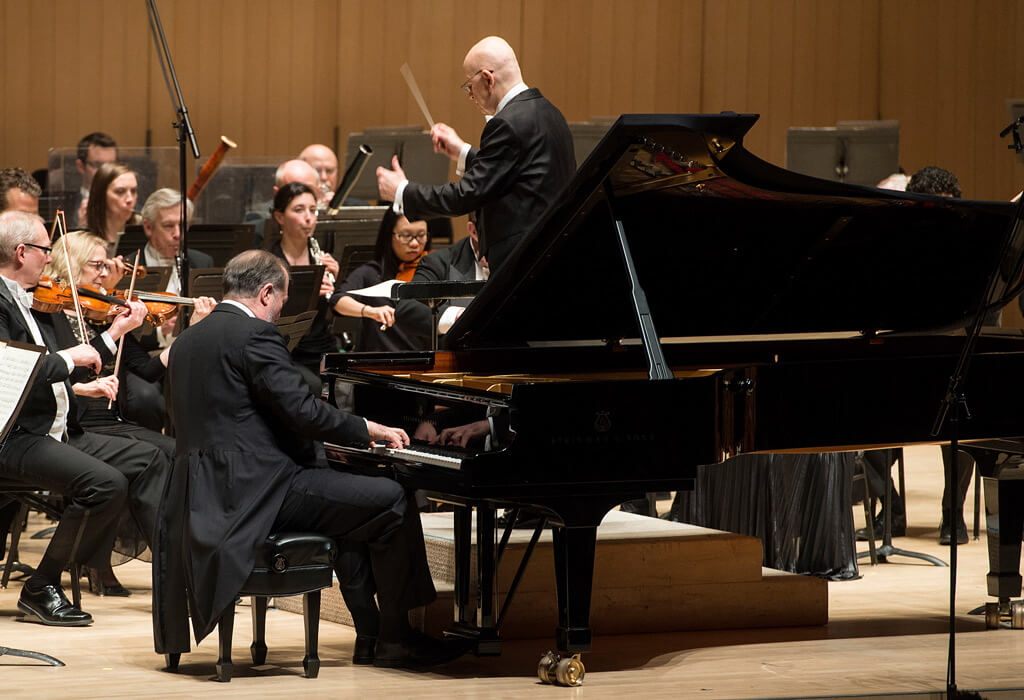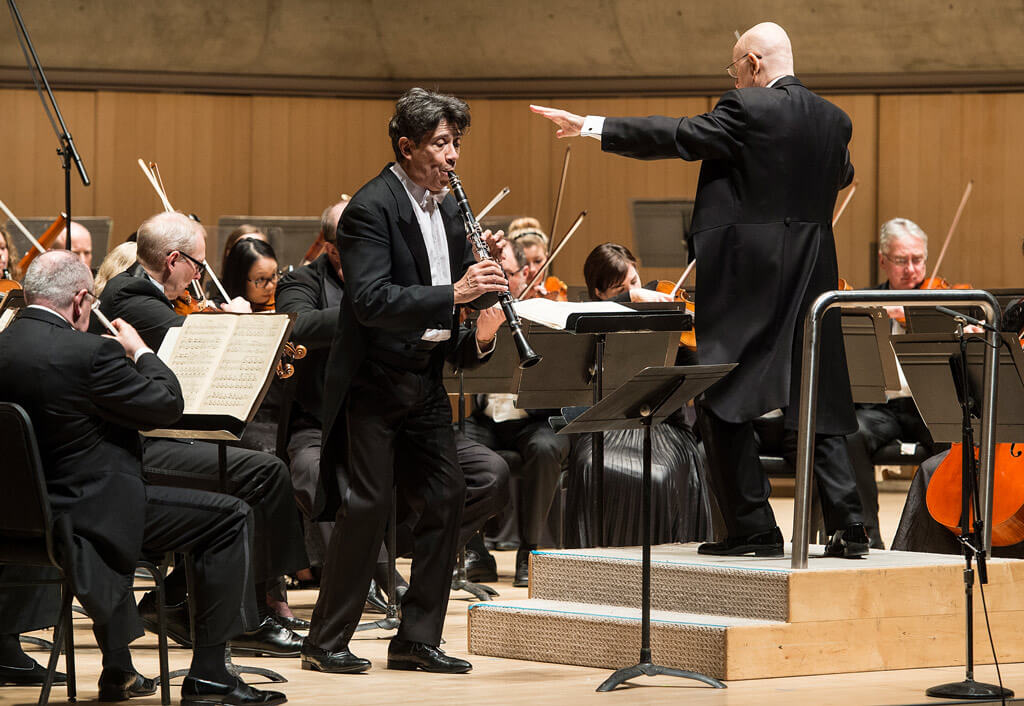
Beethoven Emperor Concerto: Toronto Symphony Orchestra with Garrick Ohlsson, guest conductor Jiří Bělohlávek, Roy Thomson Hall. Repeats February 11.
In a week when the Globe and Mail editors pleaded with Baby Boomers not to retire just yet because of the economic impact on the GNP, three distinguished artists demonstrated what a musical loss it would be for such artistically and experientially mature performers to stop working at this point. Conductor Jiří Bělohlávek, at age 70, presided over a diverse program which included clarinetist Joaquin Valdepenas, age 62 in Debussy’s Premiere Rhapsodie, and 69-year-old Garrick Ohlsson playing the Emperor Concerto.
The evening’s nod to the younger generation was the opening performance of Jocelyn Morlock’s composition Hullabaloo, A Fanfare for the Sesquicentennial, a two-minute declaration of Canadian nationhood that was a modulated statement of endurance with an edge of irresolution rather than an assertive celebration. Morlock, who wasn’t even alive for the Centennial, accepted her applause with a downward gaze and a quick nod. After that, it was an evening of proud and confident Baby Boomer prowess on parade.
The evergreen Joaquin Valdepenas, with the most hair and the least grey of the three artists, exhibited his mastery in Debussy’s Premiere Rhapsodie, a composition designed to test the mettle of a clarinetist, as it was commissioned as an exam for the Paris Conservatoire. His performance created the evanescent nuance that Debussy requires, providing an ethereal floating effect that merged discreetly with the orchestra to give the composition the distance that allows the listener to sink into a reflective state of contemplation.
Behlohlavek, who first raised his baton on the TSO podium half a lifetime ago, when he was 35, continued his lifelong promotion of Czech composers with a performance of Bohuslav Martinu’s Sixth Symphony. By the time Martinu composed this symphony, which he subtitled “fantasties symphoniques” he had lived outside Czechoslovakia for 30 years and knew he would never return while the Soviets remained in power. In 1953, when he composed it at age 63, sixty-something individuals were neither Zoomers or Boomers, but mature men aware that their lifespan was limited.
The fact that he knew he would not see Prague again may account for the grave, choral-like solemnity with which this emotionally wide-ranging piece concludes after kaleidoscopic shifts in mood and melody from ominous to quasi-militaristic to celebratory.

Ohlsson’s imposing 6’4” height creates the impression that he can handle absolutely anything that happens at the keyboard, which helps to relax the intense sense of anticipation that occurs before the Emperor Concerto. This is critical for launching the rousing opening cadenza, the opening declaration that this piece will be a showcase of the piano’s range, power and ability to hold its own with a full orchestra. Ohlsson, who is as secure as a boulder once he’s on the bench, provided this with aplomb. His emphasis on the classical nature of the composition, made the measured and balanced architecture of the concerto clear, without sacrificing any of the virtuosity, which is a major aspect of its appeal.
His size notwithstanding, Ohlssen can play as delicately as a hummingbird in the softer passages, without any loss of tone. (This tenderness was especially clear in his encore, the middle section of Beethoven’s Pathetique sonata, after which there was an audible sigh in the audience.) Nor does he indulge in showmanship, his only noticeable extra-pianistic gesture being the occasional stretching of his arms to release his wrists from his cuffs, with a kind of “push up your shirt sleeves” effect despite being in a formal jacket with tails.
The modesty of a true master, combined with outstanding rhythmic control, especially in the transitional passages when tempo gradually shifts, prompted my concert companion, piano pedagogue and former concert pianist Lawrence Pitchko to observe that this was the best Emperor Concerto he had ever heard.
It’s worth noting that arriving at such accomplished maturity is only made possible by surviving the overwhelming demands of a professional musical career. This is far more likely for practitioners of classical music than for any other branch of music. Recent data shows that male Blues musicians don’t usually make it past 65 and that’s over twice as long as the life expectancy of Hip Hop artists. Leonard Cohen made to 82, Dylan is going strong and Mick may live forever, but this is not the fate of their peers.
We give a lot of thought to the survival of cultural institutions such as our symphony, but less to the survival of the musicians who play in it. Trying to improve the life span of all musicians and other performing artists is the focus of the Performing Arts Medical Association, which is meeting in Toronto this weekend. The meeting is open to the public. After a long day of workshops and presentations by the practitioners in the field as well as several musicians and dancers, the organizers are planning to refresh themselves on Saturday night be going to see Ohlsson perform at his second concert with the TSO.



